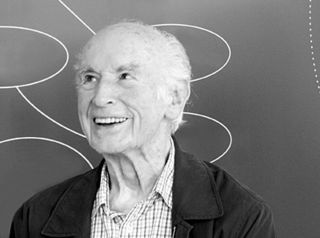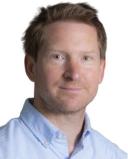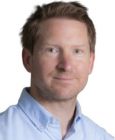Anxiety
The Psychedelic Renaissance
The story of psychedelics is an evolving tale with more twists to come.
Posted August 14, 2019 Reviewed by Abigail Fagan
In early 2014, Scientific American called for further inquiries into certain psychedelic drugs. It also criticized American drug regulators for limiting access to LSD (Lysergic acid-diethylamide), ecstasy (MDMA), and psilocybin.
Then, a few months afterward, Science described how scientists were rediscovering psychedelics – both as objects of basic research and as therapeutic applications. The basic thrust was that “more and more researchers are turning back to psychedelics” to treat depression, obsessive-compulsive disorder, various addictions, and other categories of mental illness.
One psychiatrist, Ben Sessa, has christened this moment a psychedelic renaissance. It’s not the first time commentators have used the term. And he isn’t alone in applying that label to the present. Such sites as Vice, The New Yorker, and Psychology Today have all used the phrase. It has become increasingly common.
This past July, Matt Lamkin (again in Scientific American) suggested that psychedelic medicines were definitely coming down the pike but the law itself wasn’t ready. “The prospect of psychedelic drugs gaining approval as treatments,” he argued, “will force a reckoning for our existing system of drug control.”
An even more enthusiastic writer suggested that “we are on the precipice of a mental health treatment revolution, and the ball’s already rolling.”
The ball is certainly rolling but it’s worthwhile reckoning with the history and interpretation of such psychedelics. Biographies of drugs, just like people, can evolve. It simply takes time.

LSD as a "Problem Child"
Take LSD. Albert Hofmann’s discovery of LSD in 1943 drew interest from numerous fields, including psychiatry and psychotherapy. After he tripped out on his bicycle, “doctors and scientists embraced LSD,” writes Kai Kupferschmidt.
By the mid-1960s, the biomedical community had published widely on the subject, and researchers reported positive results, if not major breakthroughs exactly, in treating anxiety, depression, and OCD behavior.
As this was happening, LSD and other psychoactive substances were associated with countercultural and anti-authority ideas, as well as with the images of the Charles Manson murders and rampant hedonism of the late 1960s. In 1968, the U.S. government cracked down on the scientific use of psychedelics. Dr. Hofmann could only shake his head. In his 1980 book, LSD My Problem Child: Reflections on Sacred Drugs, Mysticism, and Science, he lamented his “child’s” potential wasted potential.
Or so the story went, until recently. Matt Oram told me in an interview that the history of psychedelics in mental medicine, especially LSD, is a lot more complicated than historians (armchair and professional alike) have previously suggested. LSD research did not just suddenly stop 50 years ago. It didn’t grind to a halt overnight. It carried on, even though authorities worried about recreational abuse, and he makes this case rather convincingly in The Trials of Psychedelic Therapy. (Watch a relevant short documentary here.)
Recreational use and abuse of psychedelics, in short, helped undermine legitimate research. But this research didn’t go away altogether. Far from it, because a number of government-sanctioned studies carried on after 1968.

Reappearance
Before Hofmann passed away at the age of 102 in 2008, he expressed pleasure that doctors were once again analyzing his problem child. His native Switzerland had, the year before, approved the first LSD investigation in roughly four decades.
In 2009, the U.S. Food and Drug Administration joined the Swiss regulators in accepting protocols to study LSD in an anxiety/illness study. That was a mere 10 years ago.
According to Peter Gasser, head of the Swiss Medical Society for Psycholytic Therapy, Dr. Hofmann’s ultimate wish had come to pass with this twist of the tale. Dr. Gasser’s research—and LSD’s resurgence—has several causes.
Such organizations as the Multidisciplinary Association for Psychedelic Studies (MAPS) and the Heffter Research Institute, had formed partnerships with laboratories based in the U.S. as well as Switzerland, meaning psychoactive drugs had stronger institutional champions.
The subsequent advance of the psychedelic research agenda can also be partially explained by a change in personnel at the FDA to a newer generation of regulators, according to David Nichols, an emeritus professor of pharmacology at Purdue University and a co-founder of the Heffter Research Institute.
Psychedelic medicine aged – and got more serious. “The psychedelic revival” as Andrew Brown, writing in The Spectator named it, grew apart from the “wackier end of the pro-LSD lobby.”
A Full-Blown Comeback?
For all the progress that LSD has made in the past decade, though, there have been limited scientific gains and, as yet, no marketable prescription drugs. Many questions remain.
Still, researchers are now examining LSD as a treatment for alcoholism, post-traumatic stress disorder, cluster headaches, and as a supplement to palliative care. Neuroscience, as you’d expect, is more involved than in previous studies.
The literature concerning LSD and other psychedelics has undoubtedly grown over the past decade. In very recent years, numerous scholars including Patrick Barber, Alexander Dawson, Erika Dyck, Mike Jay, Matt Oram, and others have explored psychedelic medicines. That includes me, too. Meanwhile, Michael Pollan has produced a bestselling account of psychedelic science.
The histories are evolving. Mike Jay’s new book, Mescaline, forces readers to think about the cultural and biomedical elements of the cactus-derived drug. And he wonders why historians and others have given mescaline so little attention. Erika Dyck asks why psychedelics stories are so short on women and people of color. Dawson’s analysis of peyote weaves ethnicity and Mexican identity into the evolving story.
Dr. Hofmann’s “problem child,” then, has reemerged and is being reevaluated in a new political, economic, and social context. Could we consider LSD a turbulent teen? Perhaps in mid-life crisis? Perhaps. To be sure, LSD has certainly matured, according to Nicolas Langlitz in his book Neuropsychedelia: The Revival of Hallucinogen Research since the Decade of the Brain. It has grown “from wonder and shame to inquiry.”
This is crucial. Yet, we should also be aware that the psychedelic renaissance is broad, loaded with nuance, and about so much more than LSD. There are going to be many more shocking twists.




